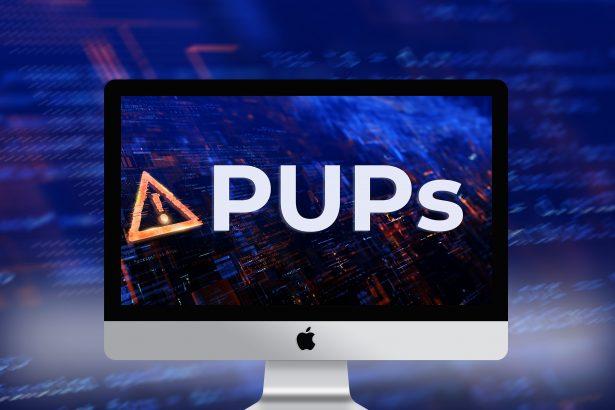In recent months, macOS users have increasingly reported the emergence of a suspicious file known as PT.updd, which lurks deep in system folders like /Library/PrivilegedHelperTools/ and is often tied to a launch daemon at /Library/LaunchDaemons/PT.updd.plist. Though it may appear innocuous at first glance, this file is far from harmless. It triggers background activity, automatically reinstalls itself after deletion, and connects to shady domains such as updpct.info — a red flag for anyone familiar with malware behavior.
Initially mistaken for a legitimate system helper linked to software like Pro Tools or Proton VPN, deeper investigation has revealed that PT.updd is almost always associated with Popcorn Time or one of its shady clones. These apps, while offering free media streaming, are well-known for bundling potentially unwanted programs (PUPs) or outright malware with their installations.
PT.updd Malware Overview
Below is a table summarizing everything we know so far about the PT.updd threat:
| Field | Details |
|---|---|
| Threat Name | PT.updd |
| Threat Type | Potentially Unwanted Program (PUP), Privileged Helper Malware |
| Associated Domains | updpct.info |
| Associated Emails | None publicly reported |
| Detection Names | OSX/GenMalicious, MacOS:Malware-PU, Generic.MAC.PTUPDD |
| Symptoms of Infection | High CPU usage, auto-restarting after deletion, login item persistence |
| Damage | System slowdown, unauthorized network activity, data collection, backdoors |
| Distribution Methods | Bundled with Popcorn Time, torrent installers, cracked software |
| Danger Level | High – persistent, disguises itself as legit, and reinstalls automatically |
Why PT.updd Is a Serious Risk
One of the key red flags is that PT.updd auto-starts at login, meaning it gains a foothold early in the boot process and can operate even before the user fully logs in. Even more troubling, it has the ability to reinstall itself after manual deletion — often a trait of malware with deep system access or support from launch daemons.
Reports from antivirus software also indicate that PT.updd is attempting outbound connections to known malicious or suspicious domains like updpct.info. This kind of behavior is typical of trojans or backdoors trying to establish communication with command and control servers.
The fact that PT.updd hides inside macOS system directories like /Library/PrivilegedHelperTools/ and mimics the behavior of legitimate helper tools makes it exceptionally stealthy. In many cases, users didn’t even know it was running until their system performance degraded or until antivirus software issued an alert.
Connection to Popcorn Time
Multiple investigations have linked this threat back to the controversial media app Popcorn Time. While Popcorn Time markets itself as a free alternative to paid streaming services, it often comes packaged with malware or adware. In fact, several users reported the presence of PT.updd shortly after installing the app or its derivatives.
Uninstalling Popcorn Time seems to be a necessary step in eradicating PT.updd, as the malware appears to piggyback off the same system privileges and installation footprint.
Method 1: Manual PUP Removal from Mac
Step 1: Uninstall Suspicious Apps
- Click the Apple menu () at the top-left and select System Settings (or System Preferences if using an older macOS version).
- Go to Applications and look through the list for any apps that seem unfamiliar or sketchy (e.g., “MacCleaner,” “Advanced Mac TuneUp,” or random software you don’t recall installing).
- Right-click on any suspicious app and choose Move to Trash.
- Open Trash, right-click, and select Empty Trash to permanently delete the application.
Step 2: Stop PUPs from Running at Startup
- Open System Settings → Click on General → Select Login Items.
- Review the list and remove anything you don’t recognize by clicking the minus (-) button.
Step 3: Clean Up Hidden PUP Files
Some PUPs leave behind hidden files even after uninstalling the app. Here’s how to track them down:
- Open Finder → Click Go in the top menu → Select Go to Folder.
- Type in the following locations one by one, pressing Enter after each:
~/Library/Application Support/~/Library/LaunchAgents//Library/LaunchDaemons//Library/Application Support/
- Look for any folders or files related to the removed PUP and drag them to the Trash.
Step 4: Reset Your Web Browser (If Necessary)
If your browser is acting strangely—redirecting searches, displaying excessive ads, or changing your homepage—it’s likely that a PUP has altered its settings.
Safari
- Open Safari → Click Safari in the top menu → Select Settings.
- Navigate to Extensions and remove any suspicious add-ons.
- Under the General tab, check and reset your homepage if needed.
- Go to Search and ensure the default search engine is set to your preferred choice.
Google Chrome
- Open Chrome → Click the three-dot menu (top-right) → Go to Settings.
- Under Extensions, remove anything unfamiliar.
- Go to Search engine and reset it if necessary.
- Scroll down to Reset and clean up → Select Restore settings to their original defaults → Click Reset settings.
Mozilla Firefox
- Open Firefox → Click on the three-line menu (top-right) → Select Add-ons and themes.
- Remove any strange extensions.
- Go to Settings → Click Home and restore your homepage if altered.
- Type about:support in the address bar → Click Refresh Firefox → Confirm reset.
Method 2: Remove PUPs Using SpyHunter
If you’d rather skip the manual work, SpyHunter for Mac provides an automated, hassle-free way to scan and remove PUPs in minutes.
Steps to Remove PUPs with SpyHunter:
- Download SpyHunter for Mac from the official link below – Get SpyHunter for Mac
- Open the downloaded file and follow the installation steps.
- Launch SpyHunter and click Start Scan.
- Wait for the scan to complete. SpyHunter will identify and list all threats, including PUPs.
- Click Remove to delete the detected threats.
- Restart your Mac to apply the changes.
Conclusion
PT.updd is more than just an annoying file – it’s a stealthy, persistent piece of malware masquerading as a system helper. With the ability to reinstall itself, connect to dangerous domains, and execute processes in the background without user consent, it poses a significant risk to macOS users. If you find PT.updd on your system, don’t dismiss it as a harmless file. Its ties to Popcorn Time and behaviors consistent with malware make it a threat worth removing immediately.
For users who aren't tech-savvy or who want peace of mind, it's wise to use a professional-grade anti-malware tool like SpyHunter to scan and automatically remove threats like PT.updd from your system.




